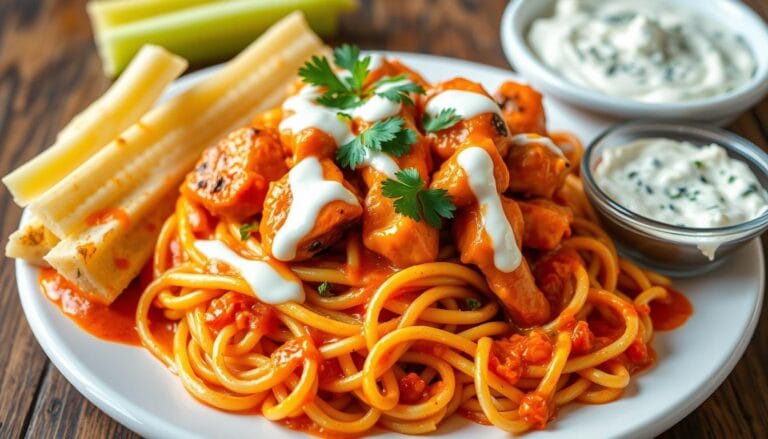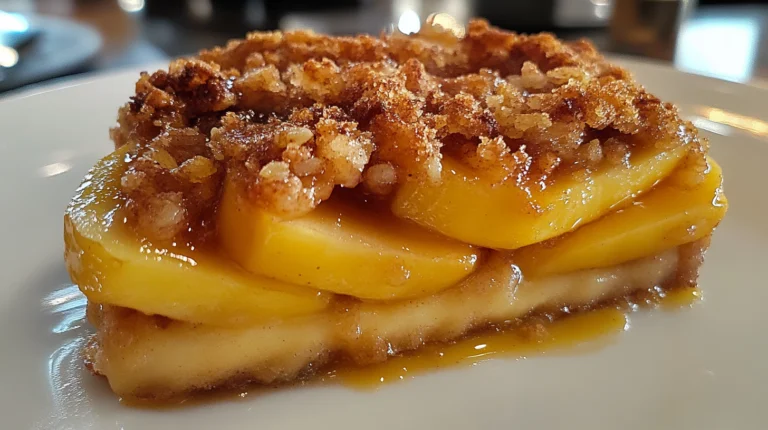Delicious and Simple Chinese Kabocha Squash Recipes for Vegans
As autumn arrives, the vibrant colors of the season call us to explore fresh produce. The Chinese kabocha squash stands out with its sweet taste and creamy texture. It comes from Japan and has become a favorite in vegan cooking worldwide.
This squash is loved for turning simple ingredients into tasty dishes. It’s a staple in many vegan kitchens.
Table of Contents
Understanding Kabocha Squash: The Japanese Pumpkin
Kabocha squash is a special type of winter squash from Japan, known as the Japanese pumpkin. It has a deep green skin and bright orange flesh. This makes it a key ingredient in many plant-based and vegetarian dishes.
Nutritional Benefits of Kabocha Squash
Kabocha squash is full of good stuff like vitamins and minerals. It’s loaded with fiber, vitamins A and C, and antioxidants. This makes it great for healthy cooking. Plus, its skin and creamy texture are loved in vegan and vegetarian meals.
Selecting and Storing Fresh Kabocha
When picking kabocha squash, choose ones that are heavy for their size. This means they have lots of water inside. The skin should be smooth and without any damage. Keep the squash in a cool, dry spot for up to a month to keep it fresh and tasty.
Why Choose Kabocha for Vegan Cooking
Kabocha squash is perfect for vegan and vegetarian cooking. It’s not only nutritious but also has a sweet, creamy taste. You can use it in soups, stews, roasted sides, and even desserts.
“Kabocha squash is a nutritional powerhouse, packed with essential vitamins and minerals. It is rich in fiber, vitamins A and C, and antioxidants, making it an excellent choice for healthy kabocha cooking.”
Essential Kitchen Tools and Ingredients for Kabocha Preparation
Learning to cook with chinese winter squash like kabocha needs a few key tools and ingredients. First, a sharp chef’s knife is essential for cutting through the squash’s thick skin. Use a sturdy cutting board for safe and stable prep. Also, a vegetable peeler helps remove the skin, revealing the orange flesh inside.
For asian vegan comfort food with kabocha, have some tasty ingredients ready. Use a neutral olive oil for sautéing and add depth with sesame oil. Soy sauce or tamari adds saltiness, while fresh ginger and garlic bring their unique aromas. Top your dishes with green onions and sesame seeds for freshness and crunch.
For more kabocha recipes, keep maple syrup, curry powder, and coconut milk in your pantry. These ingredients open up a world of chinese winter squash cuisine and asian vegan comfort food. You can make everything from savory curries to sweet glaze-coated treats.
| Tool | Ingredient |
|---|---|
| Sharp Chef’s Knife | Olive Oil |
| Sturdy Cutting Board | Sesame Oil |
| Vegetable Peeler | Soy Sauce or Tamari |
| Ginger | |
| Garlic | |
| Green Onions | |
| Sesame Seeds | |
| Maple Syrup | |
| Curry Powder | |
| Coconut Milk |
With these tools and ingredients, you’re ready to make delicious chinese winter squash cuisine and asian vegan comfort food with kabocha squash.
Chinese Squash Recipes Kabocha Vegan: Traditional Methods
Kabocha squash, also known as the Japanese pumpkin, is great in traditional Chinese vegan dishes. Learn the basic cutting and preparation to bring out its best. This way, you’ll get the perfect texture and taste every time.
Basic Cutting and Preparation Techniques
To start, warm the kabocha squash in the oven for 10 minutes. This softens the skin, making it easier to cut. After warming, cut it in half, remove the seeds, and slice the flesh into wedges or cubes. Cutting it right ensures even cooking.
Tips for Perfect Texture Every Time
Roasting is the best way to get the perfect texture. Preheat your oven to 400°F (200°C). Roast the kabocha squash for 20-40 minutes, depending on the size. You’ll get tender, caramelized chunks that are delicious.
Try steaming or stir-frying to find your favorite texture.
Common Seasoning Combinations
Kabocha squash is great for many flavors, making it perfect for vegan dishes. Use ginger and garlic for a traditional Chinese taste. Or, try a mix of five-spice powder for something different. Soy sauce-based marinades also complement its natural sweetness well.
Mastering kabocha squash preparation opens up a world of delicious vegan recipes. Experiment with different cooking methods and flavors to find your favorites.
Sesame Roasted Kabocha: A Classic Asian Favorite
Introducing the delightful Sesame Roasted Kabocha, a simple yet flavorful dish. It showcases the natural sweetness of the Japanese pumpkin. This classic Asian favorite is a must-try for fans of asian squash dishes and vegan kabocha recipes.
To prepare this divine dish, start by tossing kabocha wedges with olive oil, salt, and black pepper. Roast the seasoned squash in the oven until it’s tender and caramelized. This creates a perfect balance of sweet and savory flavors.
Once the kabocha is beautifully roasted, it’s time to add the finishing touches. Drizzle toasted sesame oil over the wedges, then sprinkle with toasted sesame seeds. The nutty aroma and crunchy texture of the sesame seeds complement the kabocha’s natural sweetness. This creates a harmonious and satisfying dish.
Serve this Sesame Roasted Kabocha as a delightful vegan side dish or a wholesome main course. Pair it with steamed rice, a crisp salad, or your favorite Asian-inspired accompaniments. Enjoy the perfect blend of flavors and textures in this classic Asian favorite.
| Ingredient | Quantity |
|---|---|
| Kabocha Squash | 1/2 kabocha (2.4 lbs, 1 kg with seeds) |
| Olive Oil | Drizzle |
| Salt | To taste |
| Black Pepper | Freshly ground, to taste |
| Toasted Sesame Oil | Drizzle |
| Toasted Sesame Seeds | Generous sprinkle |
Kabocha Curry Coconut Soup with Asian Spices
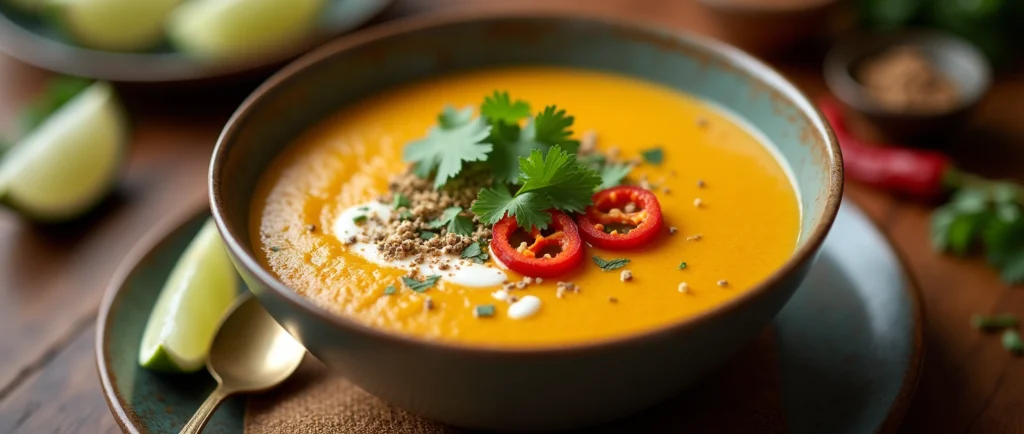
Try this Kabocha Curry Coconut Soup for a taste of plant-based comfort. It mixes kabocha squash’s sweetness with coconut milk’s creaminess. Add Asian spices for a warm, satisfying meal.
Aromatics and Spice Selection
The soup’s flavor comes from its aromatics and spices. Start by cooking onions, garlic, and ginger. Then, add curry powder for a deep flavor and cilantro for freshness.
Cooking Steps and Timing
Cook the kabocha squash in coconut milk and vegetable broth for 30 minutes. Blend it until smooth. Add lime juice for a tangy finish.
| Servings | Prep Time | Cook Time | Total Time |
|---|---|---|---|
| 8 | 20 minutes | 30 minutes | 50 minutes |
| Calories | Carbs | Protein | Fat | Sat. Fat | Cholesterol | Sodium | Fiber | Sugar |
|---|---|---|---|---|---|---|---|---|
| 307 kcal | 36g | 8g | 17g | 10g | 6mg | 658mg | 4g | 13g |
This plant-based kabocha meals recipe is a quick, comforting asian vegan comfort food option. Its vibrant flavors and creamy texture make it a favorite vegan soup.
“Asian soups offer a wide breadth of flavor profiles and ingredient lists, providing a diverse range of options for customization to personal preferences.”
Stir-Fried Kabocha with Garlic and Ginger
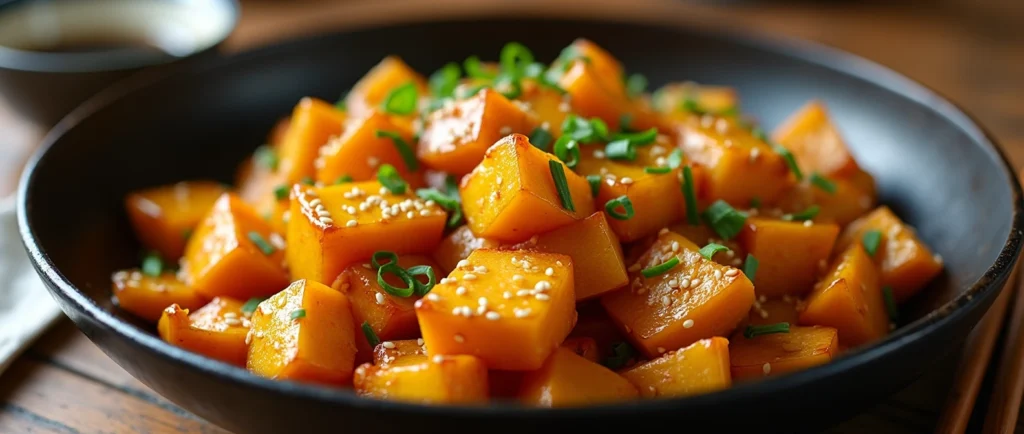
Discover the vibrant flavors of Chinese winter squash cuisine with this recipe. Stir-frying kabocha makes it crispy outside and creamy inside. Cutting it into thin slices ensures even cooking.
Begin by heating a wok or large skillet over medium-high heat. Use high-heat oil like avocado or grapeseed oil. Let it shimmer before adding minced garlic and ginger. Let their aromas bloom for 30 seconds to a minute.
Then, add the sliced kabocha squash to the pan. Stir-fry until it’s lightly golden and crisp-tender, about 5-7 minutes. Flip and toss the slices often for even cooking.
To finish, season with soy sauce or tamari for a savory umami flavor. Add toasted sesame seeds for a delightful crunch.
This quick method keeps the kabocha’s natural sweetness and nutrients. It offers a delightful texture contrast in every bite. Serve it as a side dish or add it to your favorite meatless gourd recipes for a satisfying meal.
Sweet and Savory Glazed Kabocha
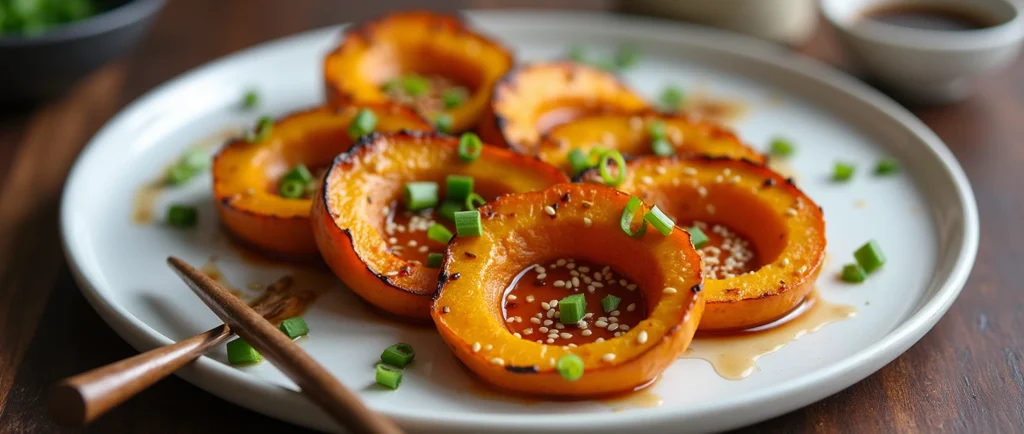
Kabocha squash is naturally sweet. A tasty glaze makes it even better. This recipe turns kabocha into a stunning side dish or main course.
Maple-Tamari Glaze Recipe
The glaze is the recipe’s star. It’s made from maple syrup and tamari (or soy sauce). Maple syrup adds sweetness, while tamari brings a savory flavor. Adding chili garlic sauce gives it a spicy twist.
Coating and Roasting Techniques
- Preheat your oven to 400°F (200°C).
- Slice the kabocha squash into wedges or bite-sized pieces, leaving the skin on for added texture and nutrients.
- In a small bowl, whisk together the maple syrup and tamari (or soy sauce) until well combined.
- Brush the glaze generously over the kabocha pieces, making sure to coat them evenly.
- Arrange the glazed kabocha on a baking sheet lined with parchment paper.
- Roast for 20-25 minutes, brushing with additional glaze halfway through the cooking time.
- The kabocha should develop a delicious, caramelized crust while remaining tender and creamy on the inside.
This method highlights the kabocha’s natural sweetness. It makes a tasty, healthy dish for any time. Every bite is a mix of sweet and savory.
| Ingredient | Amount |
|---|---|
| Kabocha squash | 1 medium (about 2 lbs) |
| Maple syrup | 1/4 cup |
| Tamari (or soy sauce) | 2 tablespoons |
| Chili garlic sauce (optional) | 1 teaspoon |
Try this easy, tasty recipe for a healthy kabocha squash dish.
Preserving and Storing Cooked Kabocha Dishes
Proper storage is crucial to keep your kabocha dishes fresh and flavorful. Cooked kabocha can be stored in airtight containers in the fridge for up to 5 days. If you want to keep it longer, you can freeze it for up to 2 months. When you reheat it, add a bit of water or broth to keep it moist and tender.
Roasted kabocha squash is incredibly versatile. You can use leftover squash in salads, grain bowls, or even make a creamy soup. Storing it properly lets you enjoy its health benefits for weeks, making meal planning easier.
Kabocha squash recipes can be adjusted to fit your diet, whether you’re vegan or like chicken broth. Learning how to store cooked kabocha dishes means you can enjoy its sweet, nutty taste whenever you want.


